Agile vs Waterfall: Pros and Cons, Differences and Similarities
November 24, 2016 / Estimated reading time: 3 minutes
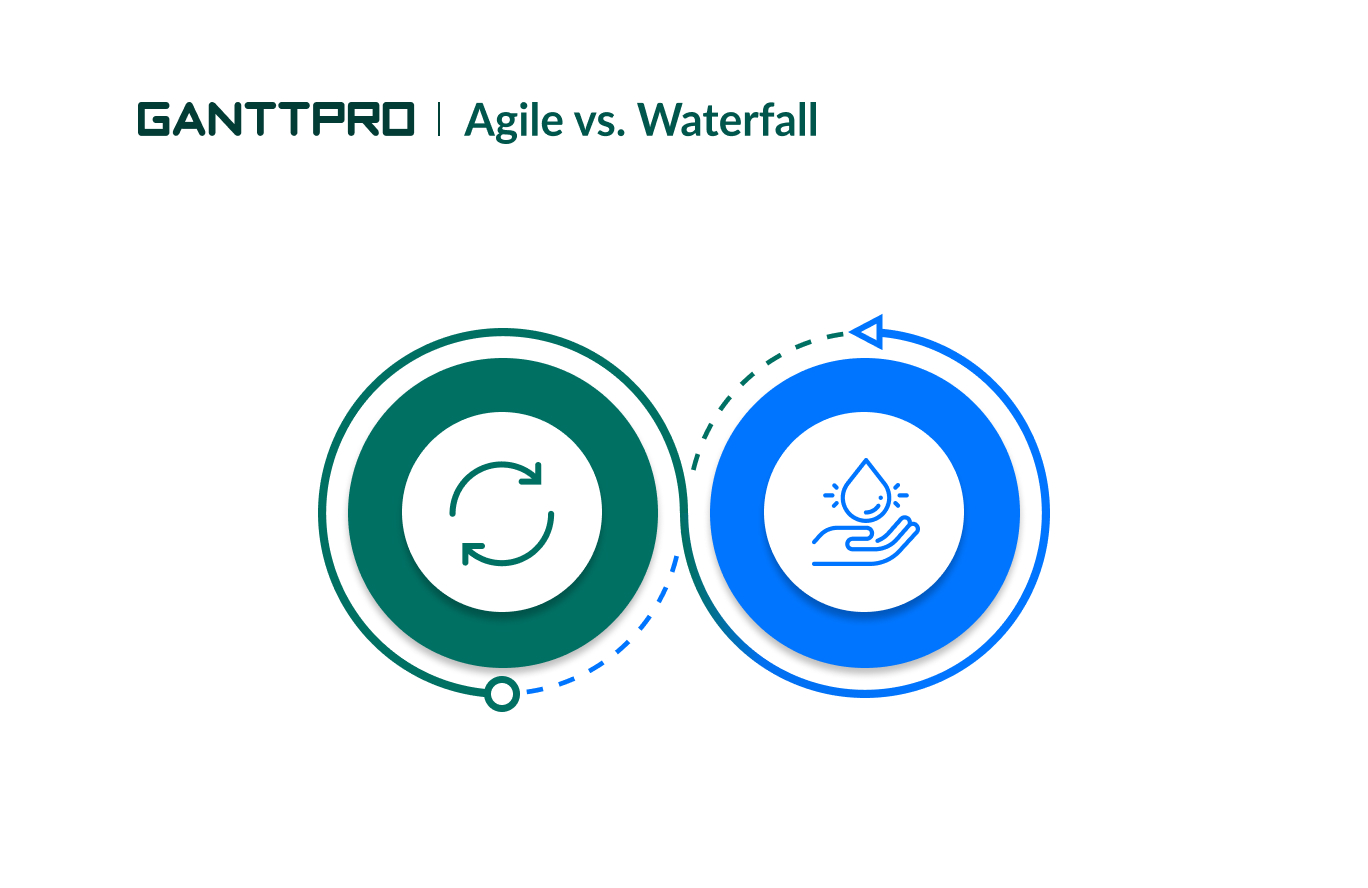
What is the most important in a project?
Let’s say, any project can be divided into two key stages: planning and management. However, the most important element in any project is its result.
It doesn’t matter what software development methodologies you use, the final result is the measure of all the work done.
Agile methodology vs Waterfall model
In this article, we determine the main features of two well-known project management methodologies and the difference between Agile and Waterfall models. It should be easy to define strengths and weaknesses of each method using friendly project scheduling software with Gantt charts.
If you have only a general and superficial opinion about these methodologies, you can find out all the details, studying the main advantages of Agile project management methodology and the features of Waterfall methodology.
If recall briefly:
Waterfall project methodology is a model in which every stage of a product’s life cycle takes place in sequence. The progress flows steadily downwards through these phases like a waterfall.
Agile software development methodology is the model that proposes a sequential, linear and iterative approach.
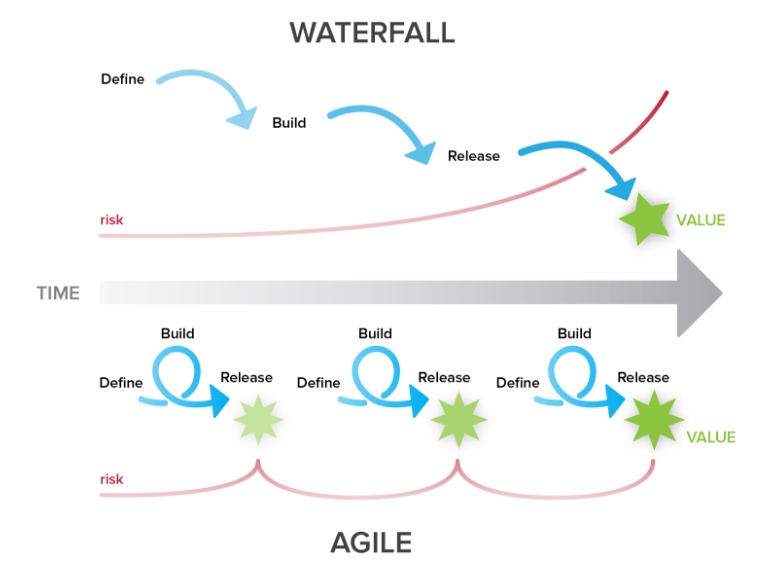
Agile versus Waterfall: how to choose between two methodologies?
Waterfall SDLC methodology, which is more traditional for software development is losing its popularity. It happens because Agile model is now being increasingly adopted by companies worldwide. The questions like “Why Agile” are no longer essential.
There was a research in 2015 from the Standish Group with interesting results: Agile method produces a higher success rate than Waterfall methodology. That’s why Waterfall is gaining the reputation of the traditional and old-fashioned way of thinking.
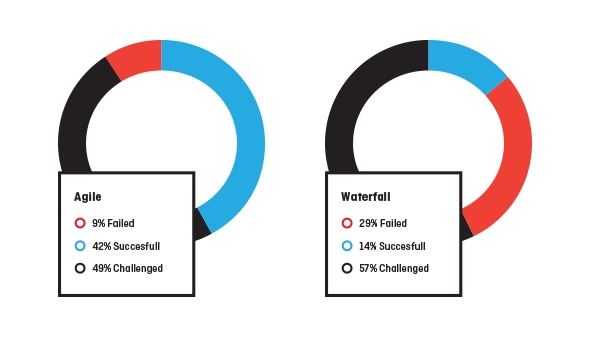
Agile development vs Waterfall: the side-by-side comparison of the models
- In Waterfall model software development, the process is divided into different phases. Agile proposes to segregate the development lifecycle into sprints.
- In Waterfall, development process should be implemented as one single project. Then this project is divided into phases. Agile contains a set of different projects that are the iterations of the different stages. They are focused on improving the quality and feedbacks from users.
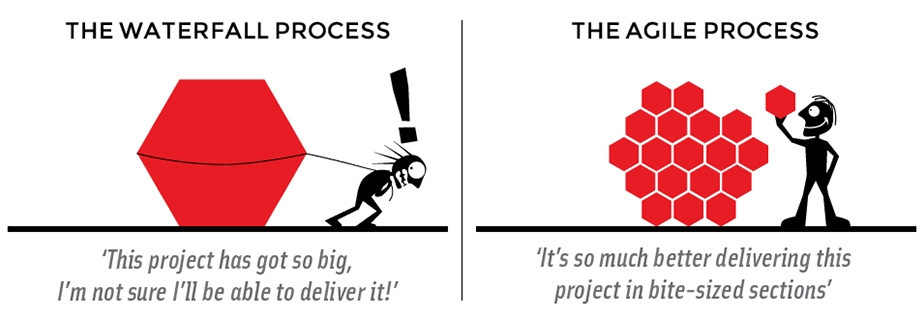
- Waterfall software development model is structured and often rigid. Often project managers prefer Agile as a more flexible model.
- According to the iterative Waterfall model in software engineering, all the project phases are completed at a time. In Agile they follow an iterative development approach. So some of the phases can appear more than once.
- There is no chance to change the requirements once the Waterfall project development starts. Agile is more flexible and allows changes in the project development requirements. Even after the planning has been completed.
- One more difference between Waterfall and Agile is their individual approach towards testing and quality. According to Agile, testing is usually performed concurrently with programming. In Waterfall, testing phase comes after the build phase.
- Waterfall approach does not require the participation of customers, as it is an internal process. However, Agile methodology focuses on clients satisfaction and involves them to participate throughout the development phase.
- Waterfall iterative model is good for projects with clearly defined requirements and without expected changes. Agile allows changing and evolving the requirements.
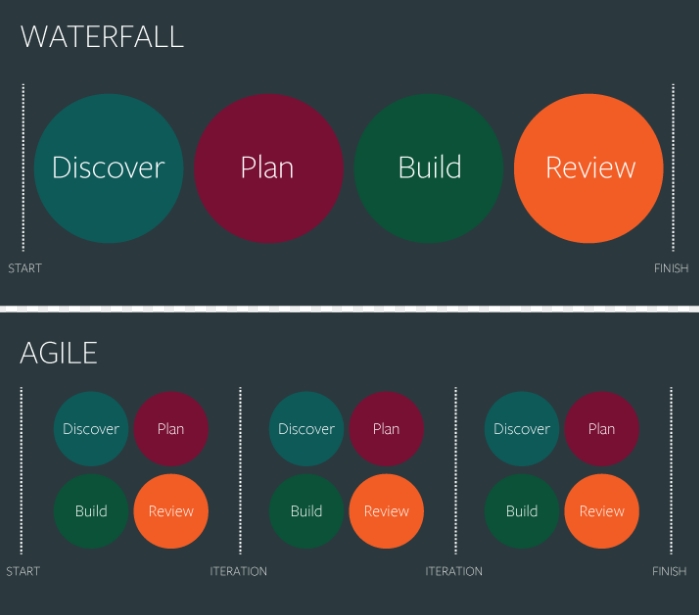
Learn more about Waterfall and Agile differences and challenges here:
https://www.youtube.com/watch?v=_U7Py7W-Qng
How to use Gantt Charts in choosing between Waterfall and Agile?
Project managers say that it’s better to visualize every project’s stage. A Gantt chart is the most convenient way to do it.
GanttPRO solutions offer to use helpful Gantt charts that can visualize every project and help to choose between Agile and Waterfall methodologies for your project. You can try to apply the charts for any project, not only for software development.
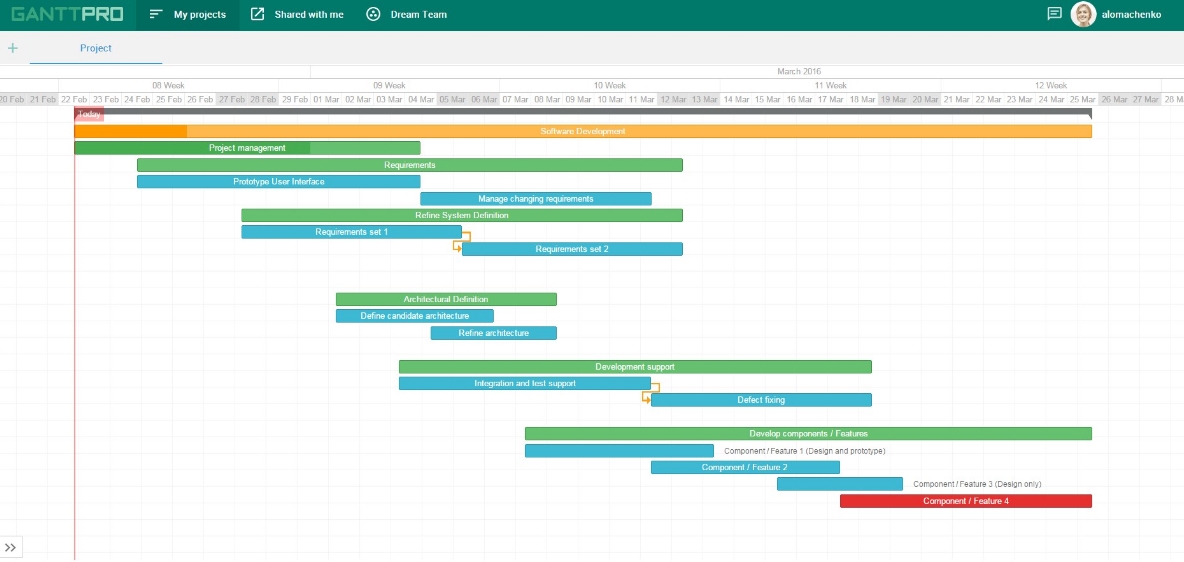
Once you’ve decided which method to utilize, you can further refine the process to best fit your project objectives.
What are your thoughts about “Waterfall vs Agile” topic? Do you know any special benefits of Waterfall and Agile methodologies? Feel free to share them!


There are benefits of Agile Methodology, at the same time, it has its demands and drawbacks in using Agile methodology. Just like other methodologies, there is no perfect one. Less predictability and more time commitment that in the end, will lead the project falls off track. I think these two are the major drawbacks of Agile.
My problem with agile is the amount of rework and the rework comes in many forms. 1) Since things are being broken up in smaller chunks to fit into sprints, non value work is needed to put it back together at some point to have a fully functional process. 2) Because of #1, you have repeated steps to rebuild test data and test environment because of the need to retest as you add on to a fully functional process that was broken up to be smaller just so it can fit into a sprint. 3) Dependencies are typically not defined… Read more »
Hi Larry. That’s a really great comment from you. You have a good theoretical and practical view on Agile
Making a workplace efficient and successful is a crucial part of every organization. However, if you are the one who deals with production and development, it becomes your top priority. By opting for the right method to manage the products and developers, it will be easier to deliver the project frequently, earn satisfaction from clients and avail more profit.